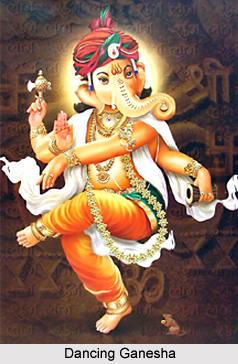 The Legend of Dancing Ganesha is mentioned in the Bhavishya Purana, which is one of the 18 Mahapuranas. Lord Ganesha is the god of literature, wisdom and success and the destroyer of pride, selfishness and vanity. The various Puranas, such as Shiva Purana, Ganesha Purana, Mudgala Purana and others, provide various accounts related to the birth, childhood, marriage and life of the deity. Ganesha is the son of Lord Shiva and Goddess Parvati and Lord Kartikeya (Murugan) is his brother.
The Legend of Dancing Ganesha is mentioned in the Bhavishya Purana, which is one of the 18 Mahapuranas. Lord Ganesha is the god of literature, wisdom and success and the destroyer of pride, selfishness and vanity. The various Puranas, such as Shiva Purana, Ganesha Purana, Mudgala Purana and others, provide various accounts related to the birth, childhood, marriage and life of the deity. Ganesha is the son of Lord Shiva and Goddess Parvati and Lord Kartikeya (Murugan) is his brother.
The Bhavishya Purana states an incident where Lord Ganesha gave a dance performance in front of his parents, during his childhood. In the incarnation of Nataraja, Lord Shiva is depicted as a cosmic dancer who performs divine dance to obliterate an exhausted universe and arranges for the process of creation by Lord Brahma. The Mahapurana describes that one day Shiva was bounded by all the gods and deities and he requested Lord Ganesha to give a dance performance. Ganesha fulfilled his father`s wish and performed a heavenly dance routine. As a reward for his performance, Ganesha was awarded the title of Gananayaka.
There are several ancient Hindu scriptures and sculptures in the nation that depict Lord Ganesha in various dancing postures.
This article is a stub. You may enrich it by adding more information to it. You can send your write-up at content@indianetzone.com




















